Filter by

Bioinformatika dasar dengan python 3
- Edition
- -
- ISBN/ISSN
- 978623114787
- Collation
- xvi, 282 p. : ill. ; 24 cm.
- Series Title
- -
- Call Number
- 572.8 Rah b
- Edition
- -
- ISBN/ISSN
- 978623114787
- Collation
- xvi, 282 p. : ill. ; 24 cm.
- Series Title
- -
- Call Number
- 572.8 Rah b
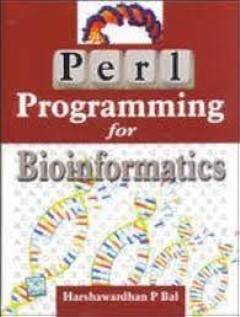
Perl programming for bioinformatics
- Edition
- -
- ISBN/ISSN
- 9780070474475
- Collation
- xix, 395 p. : ill. : ind.; 24 cm.
- Series Title
- -
- Call Number
- 005.133 Bal p
- Edition
- -
- ISBN/ISSN
- 9780070474475
- Collation
- xix, 395 p. : ill. : ind.; 24 cm.
- Series Title
- -
- Call Number
- 005.133 Bal p

Immunoinformatics Pipeline for Multi-Epitope Peptide Vaccine Design Based on …
COVID-19 were identified as viral diseases which was caused by the Severe Acute Respiratory Syndrome Coronavirus type 2 (SARS-CoV-2). The SARS-CoV-2 are known to be the family of coronaviridae. As we all know that patients that were infected by the COVID-19 has risen significantly since the very early outbreak that happens in the early December 2019 specifically at Wuhan, China. Researc…
- Edition
- -
- ISBN/ISSN
- -
- Collation
- -
- Series Title
- -
- Call Number
- -

The elements of statistical learning : data mining, inference, and prediction…
- Edition
- Second edition
- ISBN/ISSN
- 9780387848570
- Collation
- xxii, 745 p. : ill. : ind.; 24 cm.
- Series Title
- -
- Call Number
- 006.3/1 Has e
- Edition
- Second edition
- ISBN/ISSN
- 9780387848570
- Collation
- xxii, 745 p. : ill. : ind.; 24 cm.
- Series Title
- -
- Call Number
- 006.3/1 Has e
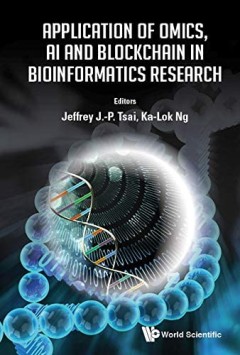
Application of omics, AI and blockchain in bioinformatics research
- Edition
- -
- ISBN/ISSN
- 9789811203572
- Collation
- ix, 192 p. : ill. : ind. ; 24 cm.
- Series Title
- -
- Call Number
- 610.285 App
- Edition
- -
- ISBN/ISSN
- 9789811203572
- Collation
- ix, 192 p. : ill. : ind. ; 24 cm.
- Series Title
- -
- Call Number
- 610.285 App
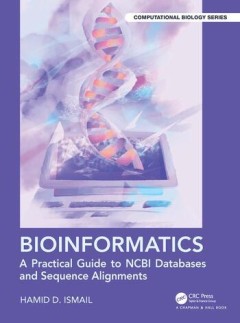
Bioinformatics : a practical guide to NCBI databases and sequence alignments
- Edition
- -
- ISBN/ISSN
- 9781032123691
- Collation
- xi, 456 p. : ill. : ind. ; 29 cm.
- Series Title
- -
- Call Number
- 570.285 Bio
- Edition
- -
- ISBN/ISSN
- 9781032123691
- Collation
- xi, 456 p. : ill. : ind. ; 29 cm.
- Series Title
- -
- Call Number
- 570.285 Bio

Comparison of Bioinformatics Pipeline for Enrichment Illumina Next Generation…
Severe Acute Respiratory Syndrome-Coronavirus 2 (SARS-CoV-2) is a newly emerging virus well known as the major cause of worldwide pandemic due to Coronavirus Disease 2019 (COVID-19). Major breakthroughs in the Next Generation Sequencing (NGS) field were elucidated following the first release of a full length SARS-CoV-2 genome in January 10th 2020, with the hope to turn the table against worseni…
- Edition
- -
- ISBN/ISSN
- -
- Collation
- -
- Series Title
- -
- Call Number
- BI 21-001

Bioinformatics institute 2011
- Edition
- -
- ISBN/ISSN
- -
- Collation
- 48 p. : ill. ; 30 cm.
- Series Title
- -
- Call Number
- 572 Bio
- Edition
- -
- ISBN/ISSN
- -
- Collation
- 48 p. : ill. ; 30 cm.
- Series Title
- -
- Call Number
- 572 Bio

Bioinformatics applications based on machine learning
- Edition
- -
- ISBN/ISSN
- 9783036507606
- Collation
- ix, 194 p. : ill. ; 25 cm.
- Series Title
- -
- Call Number
- 572.80285 Bio
- Edition
- -
- ISBN/ISSN
- 9783036507606
- Collation
- ix, 194 p. : ill. ; 25 cm.
- Series Title
- -
- Call Number
- 572.80285 Bio
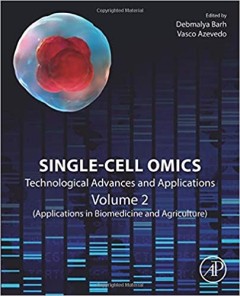
Single-cell omics : technological advances and applications volume 2 (applica…
- Edition
- -
- ISBN/ISSN
- 9780128175323
- Collation
- xxii, 361 p. : ill. : ind. ; 24 cm.
- Series Title
- -
- Call Number
- 570.285 Sin
- Edition
- -
- ISBN/ISSN
- 9780128175323
- Collation
- xxii, 361 p. : ill. : ind. ; 24 cm.
- Series Title
- -
- Call Number
- 570.285 Sin
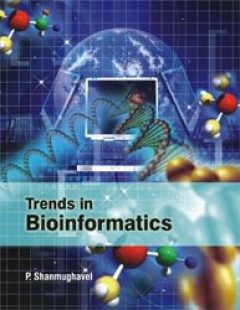
Trends in bioinformatics
- Edition
- -
- ISBN/ISSN
- 8171324614
- Collation
- -
- Series Title
- -
- Call Number
- 572.80285 Sha t
- Edition
- -
- ISBN/ISSN
- 8171324614
- Collation
- -
- Series Title
- -
- Call Number
- 572.80285 Sha t

Bioinformatics for biologists
The computational education of biologists is changing to prepare students for facing the complex datasets of today's life science research. In this concise textbook, the authors' fresh pedagogical approaches lead biology students from first principles towards computational thinking. A team of renowned bioinformaticians take innovative routes to introduce computational ideas in the context of re…
- Edition
- -
- ISBN/ISSN
- 9781107648876
- Collation
- xxix, 362 p. : ill. ; ind. ; 25 cm.
- Series Title
- -
- Call Number
- 572.8 Bio

Using R at the bench : step-by-step data analytics for biologists
- Edition
- -
- ISBN/ISSN
- 9781621821120
- Collation
- ix, 188 p. : ill. : ind. ; 24 cm.
- Series Title
- -
- Call Number
- 570.285 Bre u
- Edition
- -
- ISBN/ISSN
- 9781621821120
- Collation
- ix, 188 p. : ill. : ind. ; 24 cm.
- Series Title
- -
- Call Number
- 570.285 Bre u

Current trends in bioinformatics : an insight
- Edition
- -
- ISBN/ISSN
- 99789811074813
- Collation
- xv, 332 p. : ill. : ind. ; 24 cm.
- Series Title
- -
- Call Number
- 572.285 Wad c
- Edition
- -
- ISBN/ISSN
- 99789811074813
- Collation
- xv, 332 p. : ill. : ind. ; 24 cm.
- Series Title
- -
- Call Number
- 572.285 Wad c

Bioinformatics : a practical handbook of next generation sequencing and its a…
- Edition
- -
- ISBN/ISSN
- 9789813144743
- Collation
- xiii, 235 p. : ill. ; 24 cm
- Series Title
- -
- Call Number
- 570.285 b
- Edition
- -
- ISBN/ISSN
- 9789813144743
- Collation
- xiii, 235 p. : ill. ; 24 cm
- Series Title
- -
- Call Number
- 570.285 b
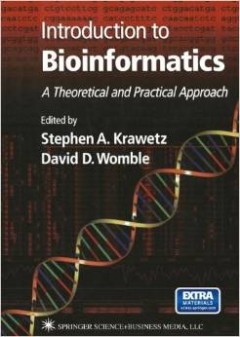
Introduction to bioinformatics : a theoretical and practical approach
The genomic revolution that has spawned microarrays and high throughput technologies has produced vast amounts of complex biological data that require integration and multidimensional analysis. In Introduction to Bioinformatics: A Theoretical and Practical Approach, leading researchers and experts introduce the key biological, mathematical, statistical, and computer concepts and tools necessary…
- Edition
- -
- ISBN/ISSN
- 9781588292414
- Collation
- xii, 746 p. : ill. : ind. ; 26 cm.
- Series Title
- -
- Call Number
- 572.285 Int
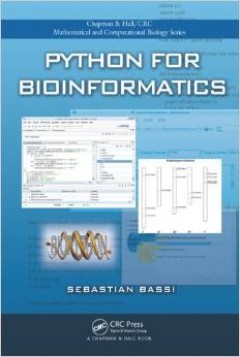
Python for bioinformatics
Programming knowledge is often necessary for finding a solution to a biological problem. Based on the author’s experience working for an agricultural biotechnology company, Python for Bioinformatics helps scientists solve their biological problems by helping them understand the basics of programming. Requiring no prior knowledge of programming-related concepts, the book focuses on the easy-to…
- Edition
- -
- ISBN/ISSN
- 9781584889298
- Collation
- xxv, 584 p. : ill. : ind. ; 24 cm
- Series Title
- -
- Call Number
- 572.80285 Bas p
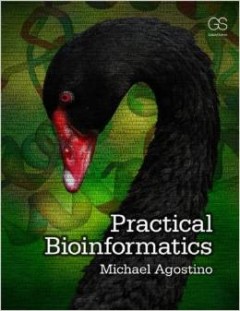
Practical bioinformatics
Practical Bioinformatics is specifically designed for biology majors, with a heavy emphasis on the steps required to perform bioinformatics analysis to answer biological questions. It is written for courses that have a practical, hands-on element and contains many exercises (for example, database searches, protein analysis, data interpretation) to complement the straightforward and practical to…
- Edition
- -
- ISBN/ISSN
- 9780815344568
- Collation
- xi, 367 p. : ill. : ind. ; 28 cm.
- Series Title
- -
- Call Number
- 572.8633 Ago p
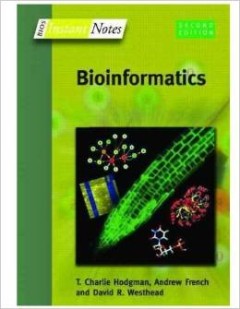
BIOS instant notes : bioinformatics
The second edition of Instant Notes in Bioinformatics introduced the readers to the themes and terminology of bioinformatics. It is divided into three parts: the first being an introduction to bioinformatics in biology; the second covering the physical, mathematical, statistical and computational basis of bioinformatics, using biological examples wherever possible; the third describing applicat…
- Edition
- 2nd
- ISBN/ISSN
- 9780415394949
- Collation
- ix, 340 p. : ill. : ind. ; 25 cm.
- Series Title
- -
- Call Number
- 570.285 Hod b
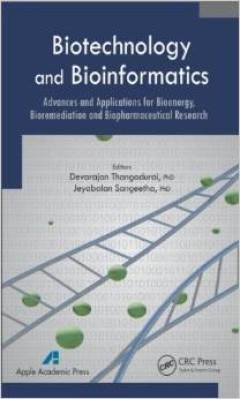
Biotechnology and bioinformatics : advances and applications for bioenergy, b…
Reflecting the interdisciplinary nature of biotechnology, this book covers the role of targeted delivery of polymeric nanodrugs to cancer cells, microbial detoxifying enzymes in bioremediation and bacterial plasmids in antimicrobial resistance. It addresses modern trends such as pharmacogenomics, evaluation of gene expression, recombinant proteins from methylotrophic yeast, identification of no…
- Edition
- -
- ISBN/ISSN
- 9781771880015
- Collation
- xix, 501 p. : ill. ; 24 cm.
- Series Title
- -
- Call Number
- 660.6 Bio
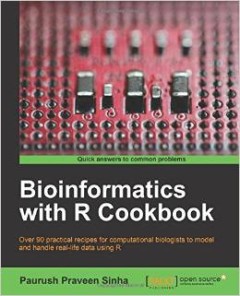
Bioinformatics with R cookbook : over 90 practical recipes for computational …
This book provides a number of recipes offering you solutions to all the computational tasks related to bioinformatics in terms of packages and testes codes.
- Edition
- -
- ISBN/ISSN
- 9781783283132
- Collation
- iv, 325 p. : ill. : ind. ; 24 cm.
- Series Title
- -
- Call Number
- 572.8636 Sin b
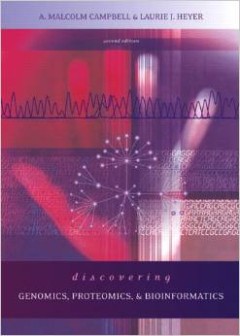
Discovering genomics, proteomics, and bioinformatics
Discovering Genomics is the first genomics text that combines web activities and case studies with a problem-solving approach to teach upper-level undergraduates and first-year graduate students the fundamentals of genomic analysis. More of a workbook than a traditional text, Discovering Genomics, Second Edition allows students to work with real genomic data in solving problems and provides the…
- Edition
- 2nd
- ISBN/ISSN
- 9780805382198
- Collation
- xv, 447 p. : ill. : ind. ; 28 cm.
- Series Title
- -
- Call Number
- 572.86 Cam d
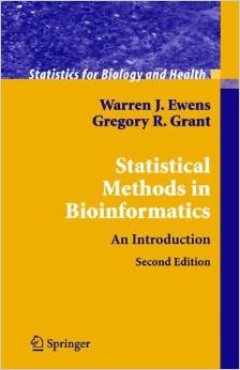
Statistical methods in bioinformatics : an introduction
- Edition
- 2nd
- ISBN/ISSN
- 9780387400822
- Collation
- xx, 597 p. : ill. : ind. ; 24 cm.
- Series Title
- -
- Call Number
- 572.838 Ewe s
- Edition
- 2nd
- ISBN/ISSN
- 9780387400822
- Collation
- xx, 597 p. : ill. : ind. ; 24 cm.
- Series Title
- -
- Call Number
- 572.838 Ewe s
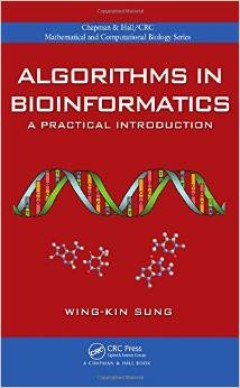
Algorithms in bioinformatics : a practical introduction
Developed from the author’s own teaching material, Algorithms in Bioinformatics: A Practical Introduction provides an in-depth introduction to the algorithmic techniques applied in bioinformatics. For each topic, the author clearly details the biological motivation and precisely defines the corresponding computational problems. He also includes detailed examples to illustrate each algorithm a…
- Edition
- -
- ISBN/ISSN
- 9781420070330
- Collation
- xvii, 381 p. : ill. : ind. ; 24 cm.
- Series Title
- -
- Call Number
- 572.80285 Sun a
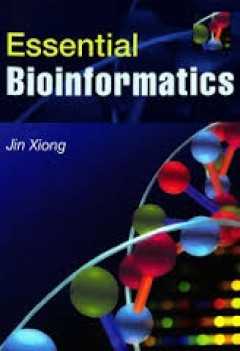
Essential bioinformatics
Introduction to biological databases -- Pairwise sequence alignment -- Database similarity searching -- Multiple sequence alignment -- Profiles and hidden Markov models -- Protein motifs and domain prediction -- Gene prediction -- Promoter and regulatory element prediction -- Phylogenetics basics -- Phylogenetic tree construction methods and programs -- Protein structure basics -- Protein struc…
- Edition
- -
- ISBN/ISSN
- 9780521600828
- Collation
- xi, 339 p. : ill. : ind. ; 27 cm.
- Series Title
- -
- Call Number
- 572.80285 Jin e
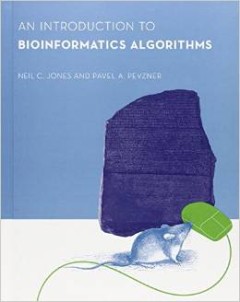
An introduction to bioinformatics algorithms
This introductory text offers a clear exposition of the algorithmic principles driving advances in bioinformatics. Accessible to students in both biology and computer science, it strikes a unique balance between rigorous mathematics and practical techniques, emphasizing the ideas underlying algorithms rather than offering a collection of apparently unrelated problems.The book introduces biologi…
- Edition
- -
- ISBN/ISSN
- 9780262101066
- Collation
- xviii, 435 p. : ill. : ind. ; 24 cm.
- Series Title
- -
- Call Number
- 572.80285 Jon i
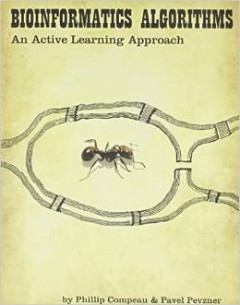
Bioinformatics algorithms : an active learning approach
Bioinformatics Algorithms: An Active Learning Approach is one of the first textbooks to emerge from the recent Massive Online Open Course (MOOC) revolution. A light-hearted and analogy-filled companion to the authors' acclaimed online course (http://coursera.org/course/bioinformatics), this book presents students with a dynamic approach to learning bioinformatics. It strikes a unique balance be…
- Edition
- -
- ISBN/ISSN
- 9780990374602
- Collation
- xxii, 362 p. : ill. ; 23 cm.
- Series Title
- -
- Call Number
- 572.80285 Com b
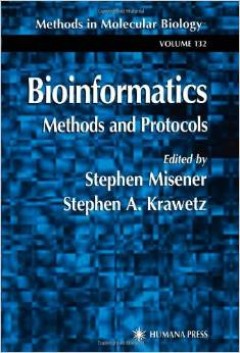
Bioinformatics methods and protocols
Computers have become an essential component of modern biology. They help to manage the vast and increasing amount of biological data and continue to play an integral role in the discovery of new biological relationships. This in silico approach to biology has helped to reshape the modern biological sciences. With the biological revolution now among us, it is imperative that each scientist deve…
- Edition
- volume 132
- ISBN/ISSN
- 9781617371561
- Collation
- xi, 500 p. : ill. ; 24 cm.
- Series Title
- -
- Call Number
- 572.8'0285 Bio
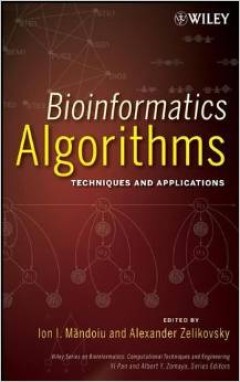
Bioinformatics algorithms : techniques and applications
Presents algorithmic techniques for solving problems in bioinformatics, including applications that shed new light on molecular biology This book introduces algorithmic techniques in bioinformatics, emphasizing their application to solving novel problems in post-genomic molecular biology. Beginning with a thought-provoking discussion on the role of algorithms in twenty-first-century bioinformat…
- Edition
- -
- ISBN/ISSN
- 9780470097731
- Collation
- xiv, 500 p. : ill. : ind. ; 25 cm.
- Series Title
- -
- Call Number
- 572.80285 Bio
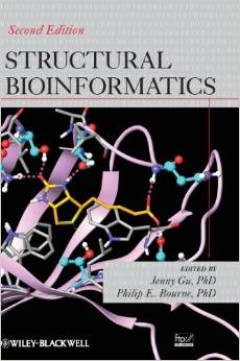
Structural bioinformatics
Structural Bioinformatics was the first major effort to show the application of the principles and basic knowledge of the larger field of bioinformatics to questions focusing on macromolecular structure, such as the prediction of protein structure and how proteins carry out cellular functions, and how the application of bioinformatics to these life science issues can improve healthcare by accel…
- Edition
- 2nd
- ISBN/ISSN
- 9780470181058
- Collation
- xxvi, 1035 p. : ill. : ind. ; 27 cm.
- Series Title
- -
- Call Number
- 572.8 Str
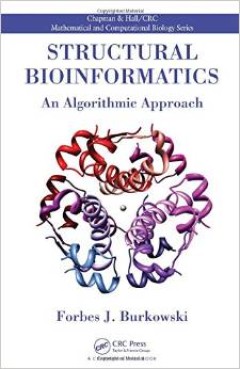
Structural bioinformatics
This book provides a basic understanding of the theories, associated algorithms, resources, and tools used in structural bioinformatics. The reader emerges with the ability to make effective use of protein, DNA, RNA, carbohydrate, and complex structures to better understand biological function. Moreover, it draws a clear connection between structural studies and the rational design of new thera…
- Edition
- -
- ISBN/ISSN
- 9780471201991
- Collation
- xix, 648 p. : ill. : ind. ; 26 cm.
- Series Title
- -
- Call Number
- 572.8 Str
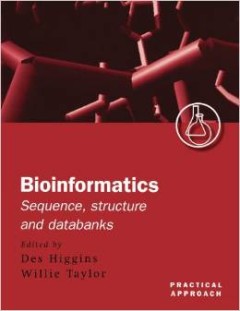
Bioinformatics : sequence, structure, and databanks : a practical approach
This volume covers practical important topics in the analysis of protein sequences and structures. It includes comparing amino acid sequences to structures comparing structures to each other, searching information on entire protein families as well as searching with single sequences, how to use the Internet and how to set up and use the SRS molecular biology database management system. Finally,…
- Edition
- -
- ISBN/ISSN
- 9780199637904
- Collation
- xx, 249 p. : ill. : ind. ; 26 cm.
- Series Title
- -
- Call Number
- 572.8 Bio
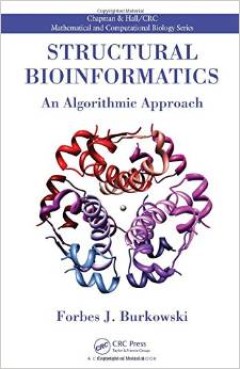
Structural bioinformatics : an algorithmic approach
The Beauty of Protein Structures and the Mathematics behind Structural Bioinformatics Providing the framework for a one-semester undergraduate course, Structural Bioinformatics: An Algorithmic Approach shows how to apply key algorithms to solve problems related to macromolecular structure. Helps Students Go Further in Their Study of Structural Biology Following some introductory material i…
- Edition
- -
- ISBN/ISSN
- 9781584886839
- Collation
- xxiii, 406 p. : ill. : ind. ; 25 cm.
- Series Title
- -
- Call Number
- 572.8 Bur s

Protein bioinformatics : from sequence to function
One of the most pressing tasks in biotechnology today is to unlock the function of each of the thousands of new genes identified every day. Scientists do this by analyzing and interpreting proteins, which are considered the task force of a gene. This single source reference covers all aspects of proteins, explaining fundamentals, synthesizing the latest literature, and demonstrating the most im…
- Edition
- -
- ISBN/ISSN
- 9788131222973
- Collation
- xix, 320 p. : ill. : ind. ; 25 cm.
- Series Title
- -
- Call Number
- 572.6 Gro p
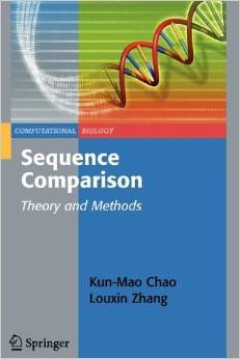
Sequence comparison : theory and methods
Biomolecular sequence comparison is the origin of bioinformatics. This book gives a complete in-depth treatment of the study of sequence comparison. A comprehensive introduction is followed by a focus on alignment algorithms and techniques, proceeded by a discussion of the theory. The book examines alignment methods and techniques, features a new issue of sequence comparison - the spaced see…
- Edition
- -
- ISBN/ISSN
- 9781849967822
- Collation
- xx, 209 p. ; 25 cm.
- Series Title
- -
- Call Number
- 572.8 Cha s
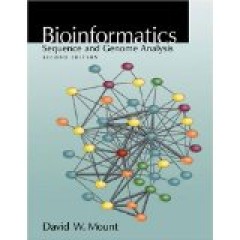
Bioinformatics : sequence and genome analysis
As more species' genomes are sequenced, computational analysis of these data has become increasingly important. The second, entirely updated edition of this widely praised textbook provides a comprehensive and critical examination of the computational methods needed for analyzing DNA, RNA, and protein data, as well as genomes. The book has been rewritten to make it more accessible to a wider au…
- Edition
- 2nd
- ISBN/ISSN
- 9780879697129
- Collation
- xii, 692 p. : ill. : ind. ; 28 cm
- Series Title
- -
- Call Number
- 572.8 Mou b
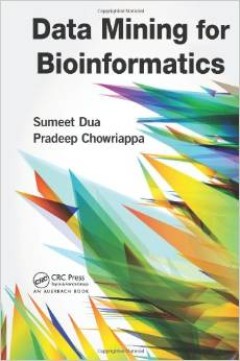
Data mining for bioinformatics
Covering theory, algorithms, and methodologies, as well as data mining technologies, Data Mining for Bioinformatics provides a comprehensive discussion of data-intensive computations used in data mining with applications in bioinformatics. It supplies a broad, yet in-depth, overview of the application domains of data mining for bioinformatics to help readers from both biology and computer scien…
- Edition
- -
- ISBN/ISSN
- 9780849328015
- Collation
- xix, 328 p. : ill. : ind. ; 24 cm
- Series Title
- -
- Call Number
- 572.330285 Dua d
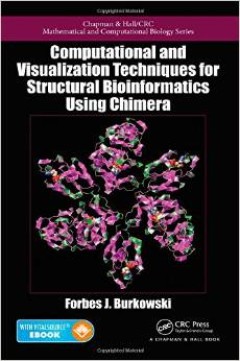
Computational and visualization techniques for structural bioinformatics usin…
A Step-by-Step Guide to Describing Biomolecular Structure Computational and Visualization Techniques for Structural Bioinformatics Using Chimera shows how to perform computations with Python scripts in the Chimera environment. It focuses on the three core areas needed to study structural bioinformatics: biochemistry, mathematics, and computation. Understand Important Concepts of Structura…
- Edition
- -
- ISBN/ISSN
- 9781439836613
- Collation
- xxv, 419 p. : ill. : ind. ; 24 cm.
- Series Title
- -
- Call Number
- 572.330285 Bur c
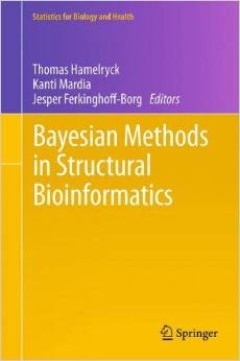
Bayesian methods in structural bioinformatics
This book is an edited volume, the goal of which is to provide an overview of the current state-of-the-art in statistical methods applied to problems in structural bioinformatics (and in particular protein structure prediction, simulation, experimental structure determination and analysis). It focuses on statistical methods that have a clear interpretation in the framework of statistical physic…
- Edition
- -
- ISBN/ISSN
- 9783642272240
- Collation
- xxii, 385 p. : ill. ; 24 cm.
- Series Title
- -
- Call Number
- 572.33 Bay
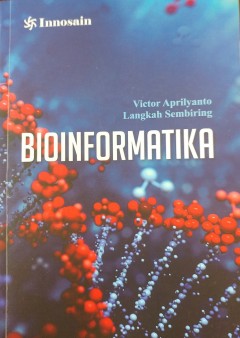
Bioinformatika
- Edition
- -
- ISBN/ISSN
- 9786026542328
- Collation
- xxviii, 490 p, 25 x 17 cm
- Series Title
- -
- Call Number
- 572.8 Apr b
- Edition
- -
- ISBN/ISSN
- 9786026542328
- Collation
- xxviii, 490 p, 25 x 17 cm
- Series Title
- -
- Call Number
- 572.8 Apr b
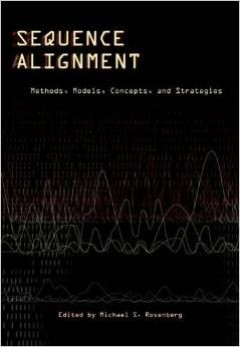
Sequence alignment : methods, models, concepts, and strategies
The sequencing of the human genome involved thousands of scientists but used relatively few tools. Today, obtaining sequences is simpler, but aligning the sequences—making sure that sequences from one source are properly compared to those from other sources—remains a complicated but underappreciated aspect of comparative molecular biology. This volume, the first to focus on this crucial ste…
- Edition
- -
- ISBN/ISSN
- 9780520256972
- Collation
- xvi, 337 p. : ill. : ind. ; 24 cm.
- Series Title
- -
- Call Number
- 572.80285 Seq
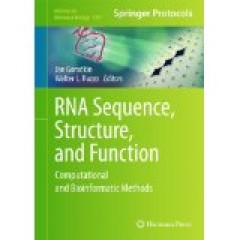
RNA sequence, structure, and function: computational and bioinformatics methods
The existence of genes for RNA molecules not coding for proteins (ncRNAs) has been recognized since the 1950's, but until recently, aside from the critically important ribosomal and transfer RNA genes, most focus has been on protein coding genes. However, a long series of striking discoveries, from RNA's ability to carry out catalytic function, to discovery of riboswitches, microRNAs and other…
- Edition
- -
- ISBN/ISSN
- 9781627037082
- Collation
- -
- Series Title
- -
- Call Number
- 572.80285 Gor r
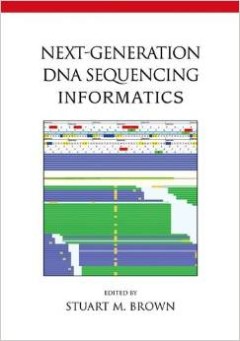
Next-generation DNA sequencing informatics
Next-generation DNA sequencing (NGS) technology has revolutionized biomedical research, making complete genome sequencing an affordable and frequently used tool for a wide variety of research applications. Bioinformatics methods to support DNA sequencing have become a critical bottleneck for many researchers and organizations wishing to make use of NGS technology. This book provides a thorough …
- Edition
- -
- ISBN/ISSN
- 9781936113873
- Collation
- xiii, 241 p. : ill. : ind. ; 26 cm.
- Series Title
- -
- Call Number
- 572.8633 Nex
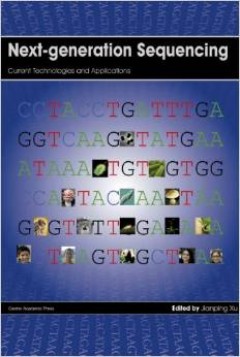
Next-generation sequencing : current technologies and applications
High-throughput, next generation sequencing (NGS) technologies are capable of producing a huge amount of sequence data in a relatively short time and have revolutionized genome research in recent years. The powerful and flexible nature of NGS has made it an indispensable tool for a broad spectrum of biological sciences, and NGS technologies have transformed scientific research in many fields. W…
- Edition
- -
- ISBN/ISSN
- 9781908230331
- Collation
- xi, 159 p. : ill. : ind. ; 26 cm.
- Series Title
- -
- Call Number
- 572.8 Nex
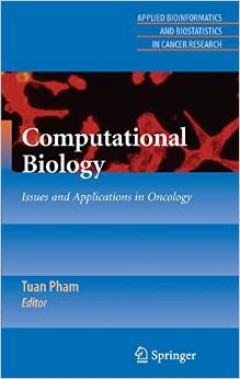
Computational biology : issues and application in oncology
Computational biology is an interdisciplinary research that applies approaches and methodologies of information sciences and engineering to address complex pr- lems in biology. With rapid developments in the omics and computer technologies over the past decade, computational biology has been evolving to cover a much wider research domain and applications in order to adequately address challengi…
- Edition
- -
- ISBN/ISSN
- 9781441908100
- Collation
- viii, 309 p. : ill. : ind. ; 24 cm.
- Series Title
- -
- Call Number
- 572.8 Com

Bioinformatics and functional genomics
The bestselling introduction to bioinformatics and functional genomics-now in an updated edition Widely received in its previous edition, Bioinformatics and Functional Genomics offers the most broad-based introduction to this explosive new discipline. Now in a thoroughly updated and expanded Second Edition, it continues to be the go-to source for students and professionals involved in biomedica…
- Edition
- 2nd
- ISBN/ISSN
- 9780470085851
- Collation
- xxviii, 951 p. : ill. : ind. ; 28 cm.
- Series Title
- -
- Call Number
- 572.86 Pev b
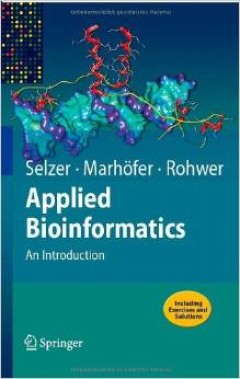
Applied bioinformatics : an introduction
At last, here is a baseline book for anyone who is confused by cryptic computer programs, algorithms and formulae, but wants to learn about applied bioinformatics. Now, anyone who can operate a PC, standard software and the internet can also learn to understand the biological basis of bioinformatics, of the existence as well as the source and availability of bioinformatics software, and how to …
- Edition
- -
- ISBN/ISSN
- 9783540727996
- Collation
- xiv, 287 p. : ill. : ind. ; 24 cm.
- Series Title
- -
- Call Number
- 572.80285 Sel a
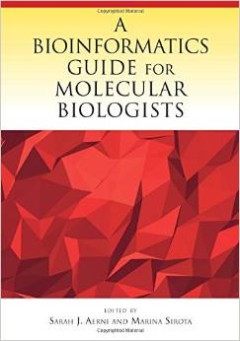
A bioinformatics guide for molecular biologists
Informatics can vastly assist progress in research and development in cell and molecular biology and biomedicine. However, many investigators are either unaware of the ways in which informatics can improve their research or find it inaccessible due to a feeling of "informatics anxiety." This sense of apprehension results from improper communication of the principles behind these approaches and …
- Edition
- -
- ISBN/ISSN
- 9781936113224
- Collation
- vii, 319 p. : ill. : ind. ; 26 cm.
- Series Title
- -
- Call Number
- 572.80285 Bio
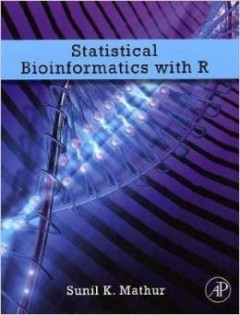
Statistical bioinformatics with R
Designed for a one or two semester senior undergraduate or graduate bioinformatics course, Statistical Bioinformatics takes a broad view of the subject - not just gene expression and sequence analysis, but a careful balance of statistical theory in the context of bioinformatics applications. The inclusion of R code as well as the development of advanced methodology such as Bayesian and Markov …
- Edition
- -
- ISBN/ISSN
- 9780123751041
- Collation
- xiii, 319 p. : ill. : ind. ; 24 cm.
- Series Title
- -
- Call Number
- 572.8636 Mat s
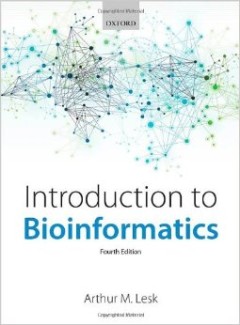
Introduction to bioinformatics fourth edition
Introduction to Bioinformatics shows how bioinformatics can be used as a powerful set of tools for retrieving and analyzing this biological data, and how bioinformatics can be applied to a wide range of disciplines such as molecular biology, medicine, biotechnology, forensic science, and anthropology. This new edition contains two new chapters, with significantly increased coverage of metabolic…
- Edition
- Fourth Edition
- ISBN/ISSN
- 9780199651566
- Collation
- xxii, 371 p. : ill. : ind. ; 27 cm.
- Series Title
- -
- Call Number
- 572.80285 Les i
 Computer Science, Information & General Works
Computer Science, Information & General Works  Philosophy & Psychology
Philosophy & Psychology  Religion
Religion  Social Sciences
Social Sciences  Language
Language  Pure Science
Pure Science  Applied Sciences
Applied Sciences  Art & Recreation
Art & Recreation  Literature
Literature  History & Geography
History & Geography